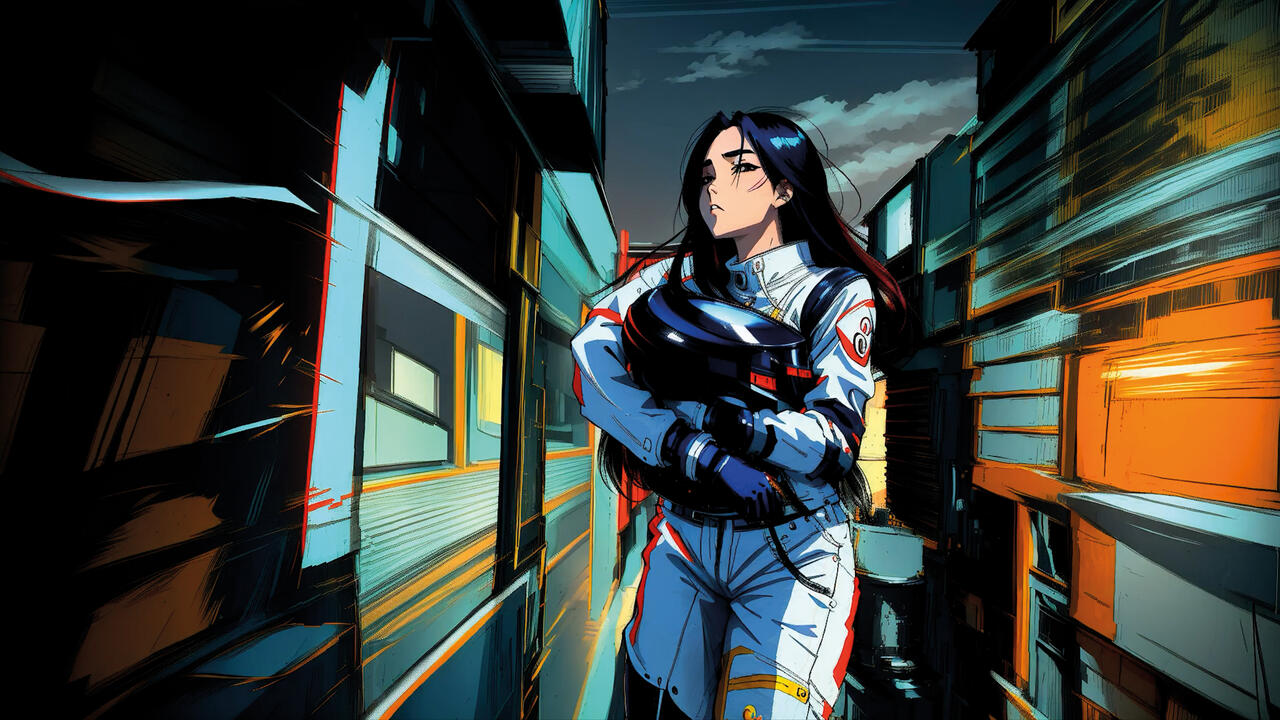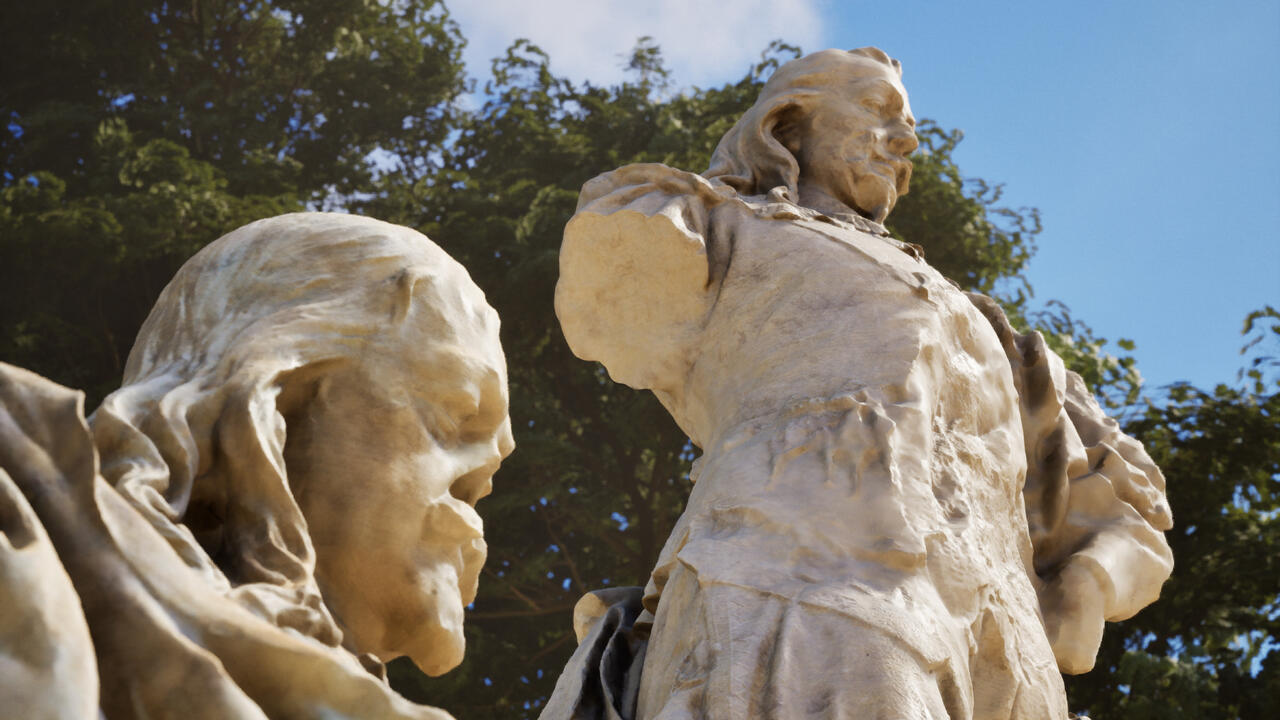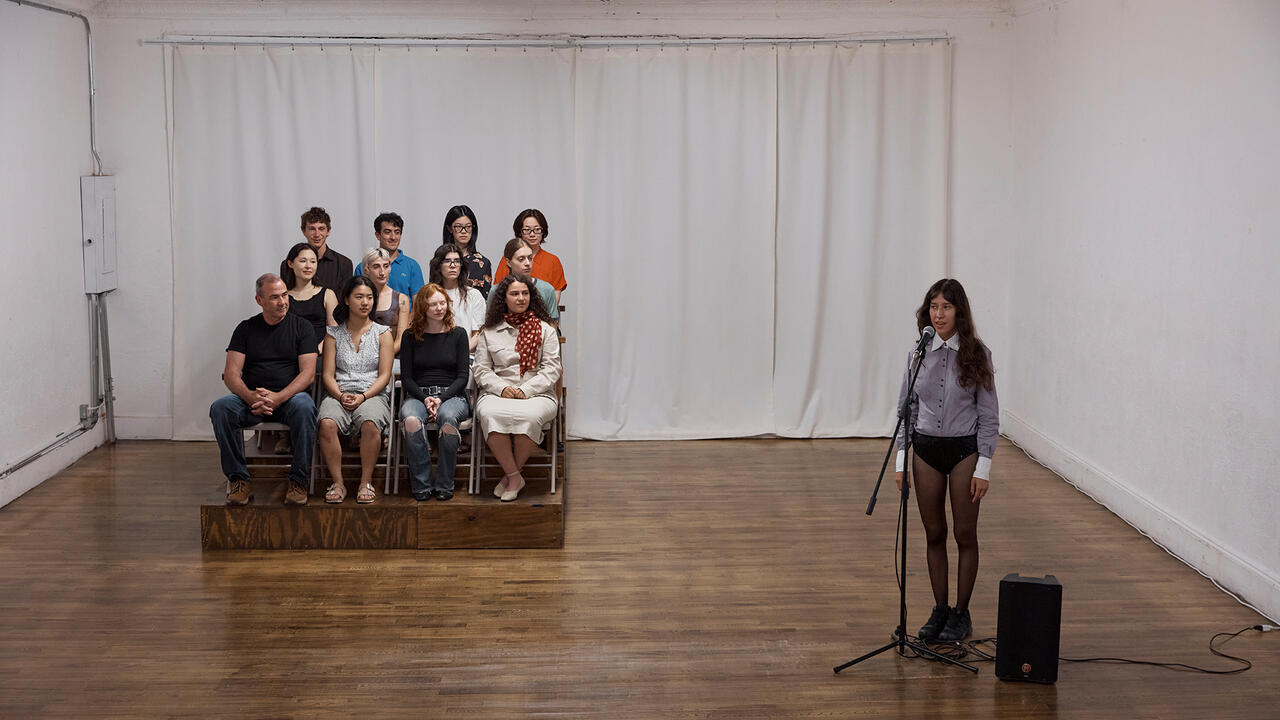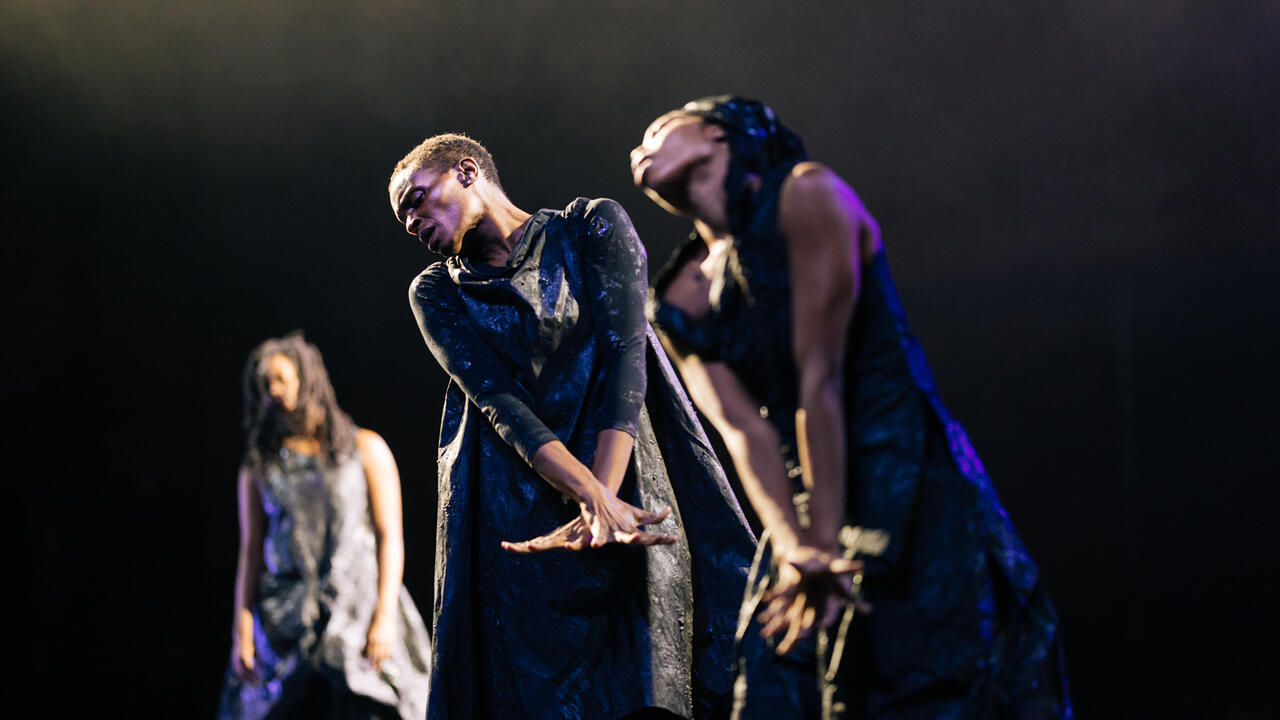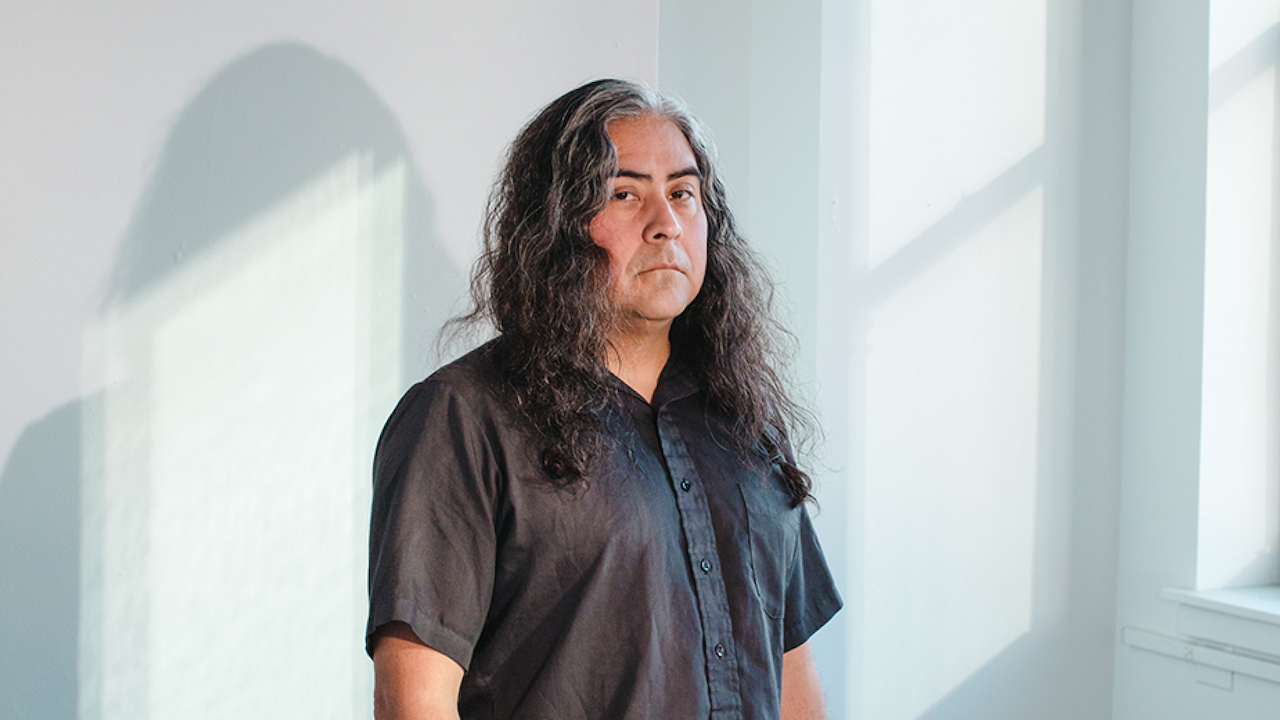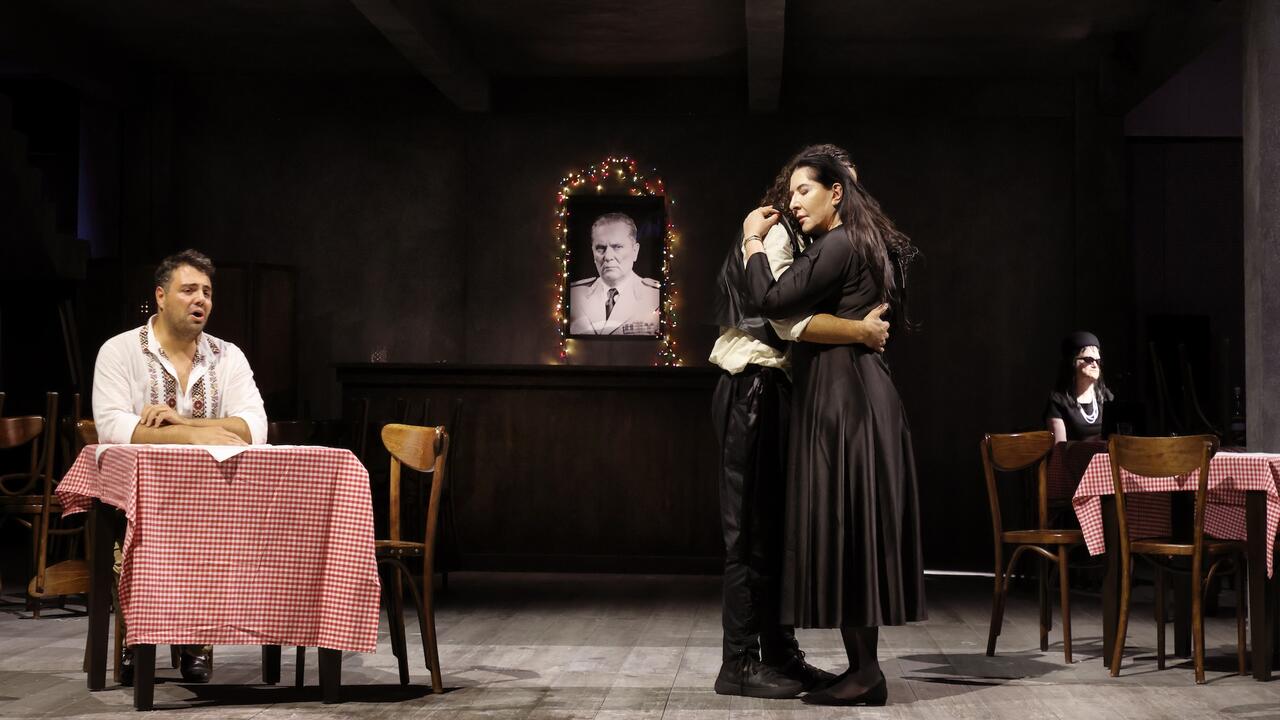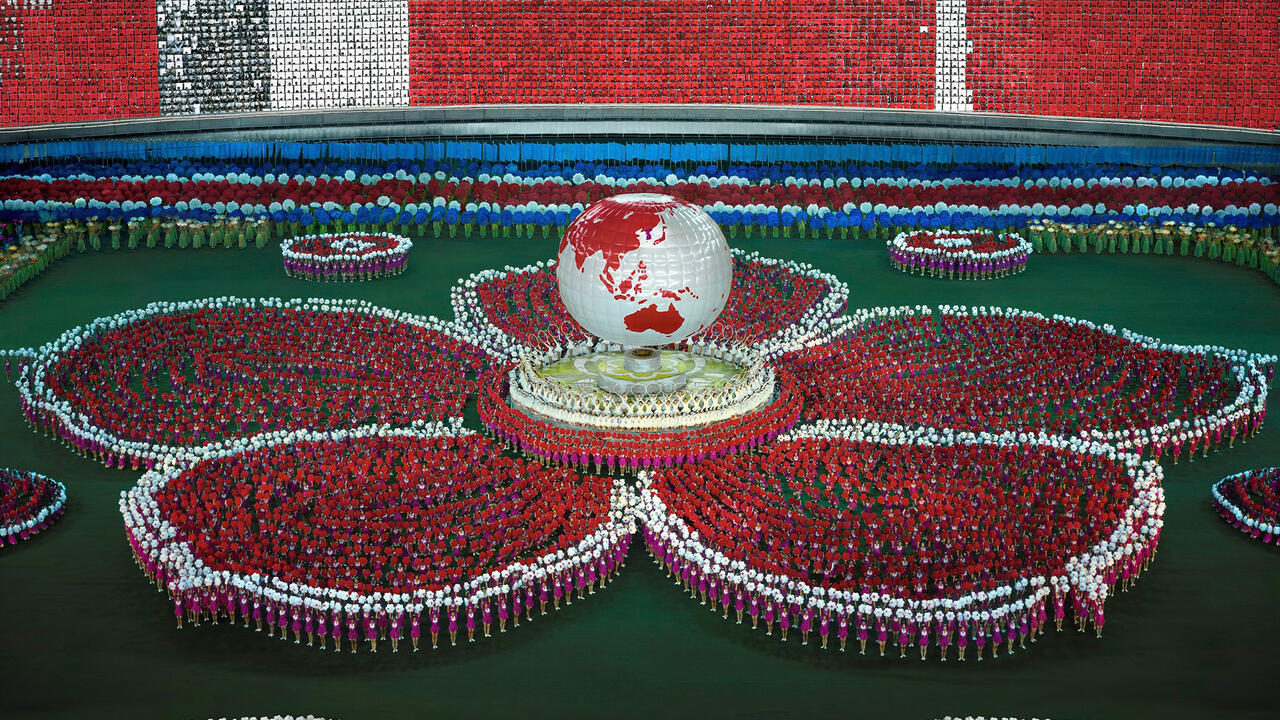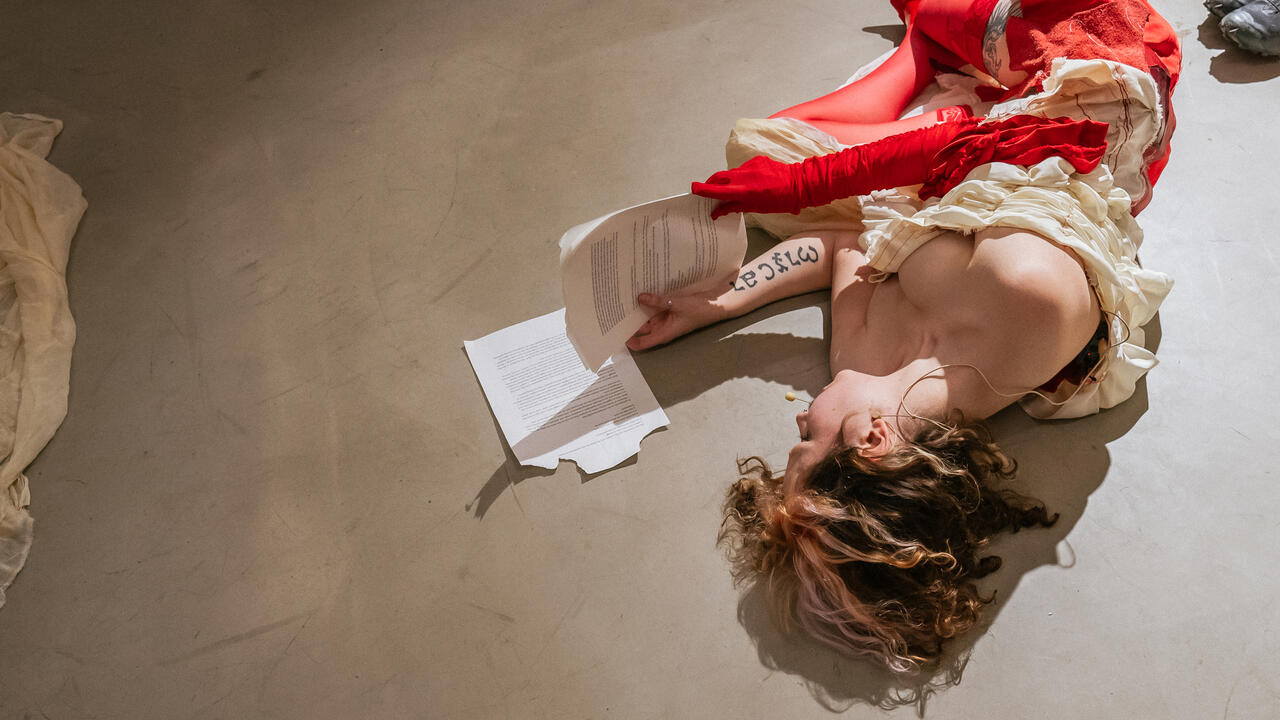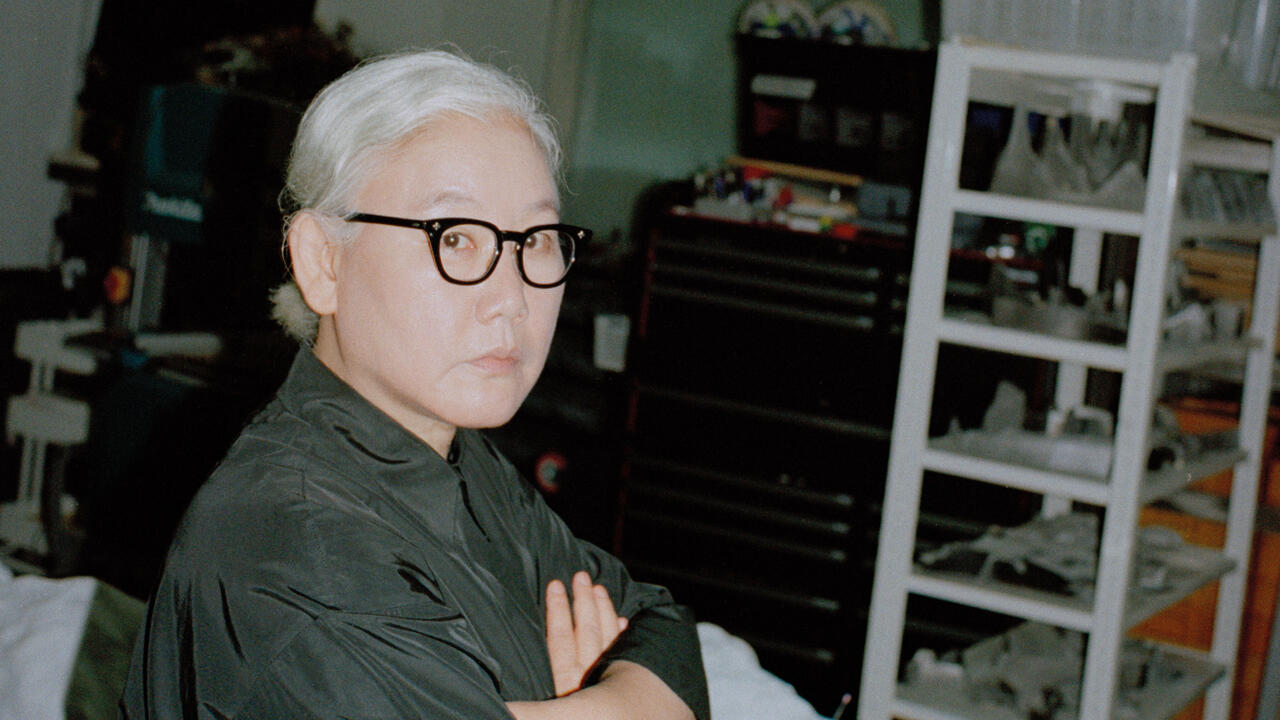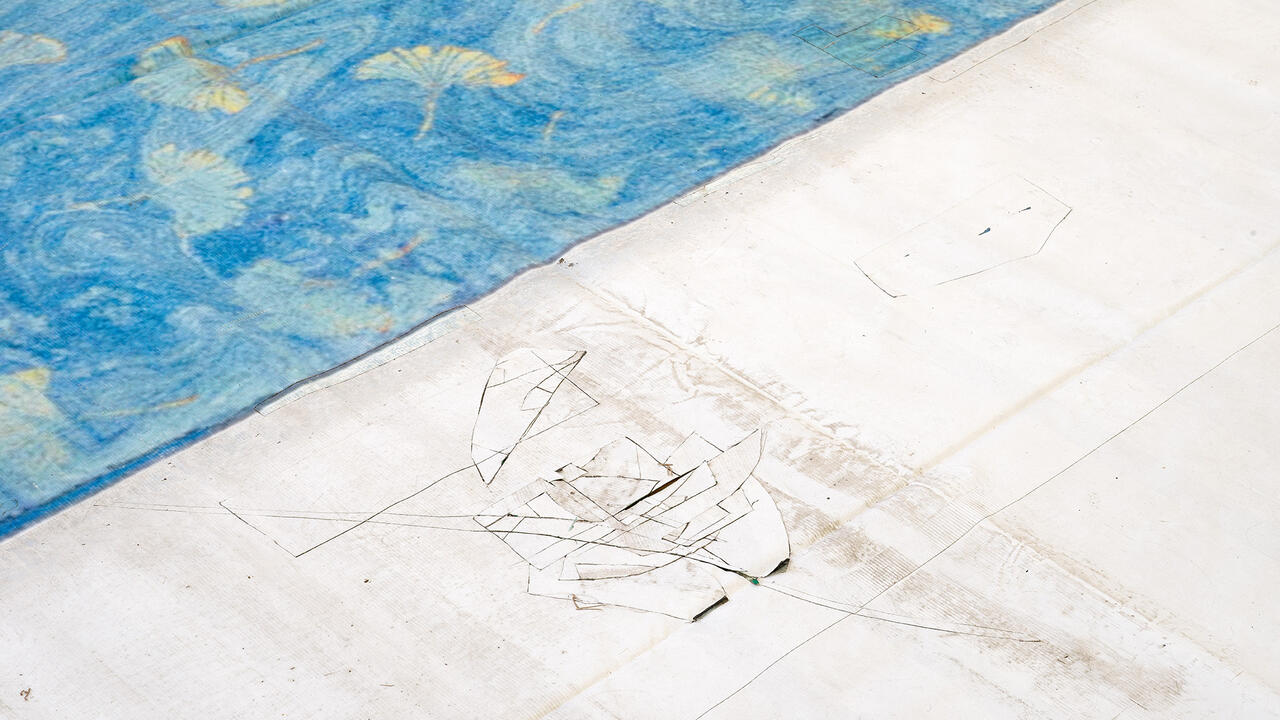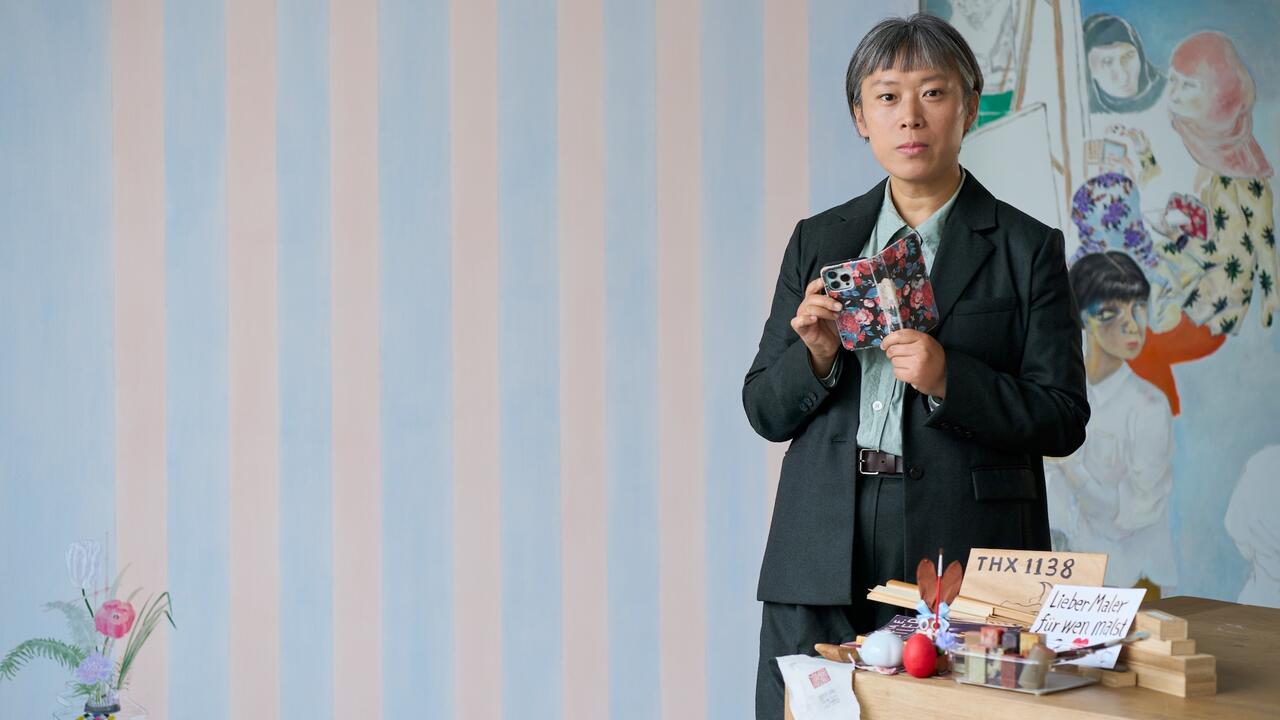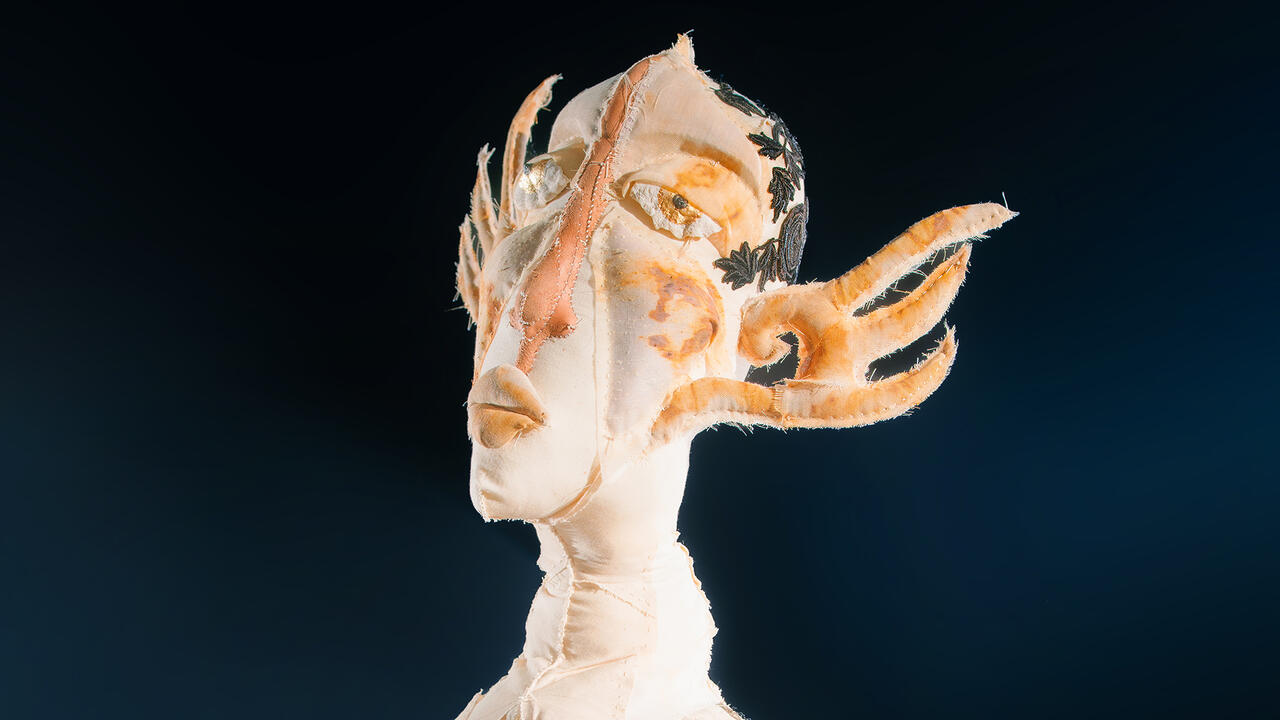Ralph Lemon on Coming Apart, and Piecing Himself Back Together
The inventive and evasive choreographer, at work on a new project, grapples with the spectacle of death
The inventive and evasive choreographer, at work on a new project, grapples with the spectacle of death

Ralph Lemon, the choreographer and artist, has asked many times that this piece not be published. In an email to me, he wrote: ‘You (must) know that a part of me thinks that if this thing is not published that would be kind of perfect.’ After I refused to concede, he replied: ‘How hard (and unresolved) it is to relinquish the power (and drama) of the mark. To let things (life) be.’
One of the reasons for Lemon’s evasiveness is that his latest project, Saturnalia, is meant to never have a final outcome. A modular series of performances that pop up unexpectedly in different venues, it is composed of performative shrapnel: excerpts from previous works, as well as recorded dialogues between Lemon and his collaborators. This past February, a version of Saturnalia appeared as part of Kevin Beasley’s exhibition at the Whitney Museum in New York; Lemon’s participation was not advertised and his invitation to me read only ‘Sat. 6pm! R’. Okwui Okpokwasili, one of Lemon’s long-term collaborators, performed dressed as ‘Amy Winehouse as Biggie Smalls as Bob Dylan,’ scream-singing ‘I’M DYING! I’M DYING!’ over and over, in a reprisal of her role from Lemon’s Scaffold Room (2014) at the Walker Art Center, Minneapolis. Darrell Jones, another performer and collaborator of Lemon’s, vogued and contorted his body, eventually flipping Lemon the finger from across the room when he had reached the point of exhaustion. Three other dancers performed moves from episodes of the television show Soul Train (1971–2006) – featured in Lemon’s work Chorus (2018) – for two hours without pause.

I asked Lemon when Saturnalia’s final performance might come, to assuage the editors who require such practical information. He soured. ‘So interesting to me that there’s such resistance to a “no show” profile,’ he wrote, ‘when it’s the interstitial space, the gaps, the very active invisible space and time that holds everything together [that] is the primary engine of any spectacle. Alas.’ Later, he proposed we ‘devise a fake show’ to satisfy the press. ‘Then you would get in trouble, but that would be great.’
***
I first met Lemon in 2017, at a cafe near his Brooklyn home. He began his dancing career in 1975, at the age of 23, working with choreographer Nancy Hauser. Now 67, Lemon spent much of our initial conversation considering how his body will disintegrate with age. Dance is often seen as the province of young, healthy bodies; as dancers age and lose agility, they force us to confront our own eventual demise. Yet, the act of falling apart has long characterized Lemon’s work, in one way or another. He founded his dance company in 1985, only to disband it ten years later, at the height of its reputation. In a letter announcing the company’s closure to his supporters, Lemon included an excerpt from his journals: ‘I imagine the body having the choice to come apart […] And then coming back together again.’
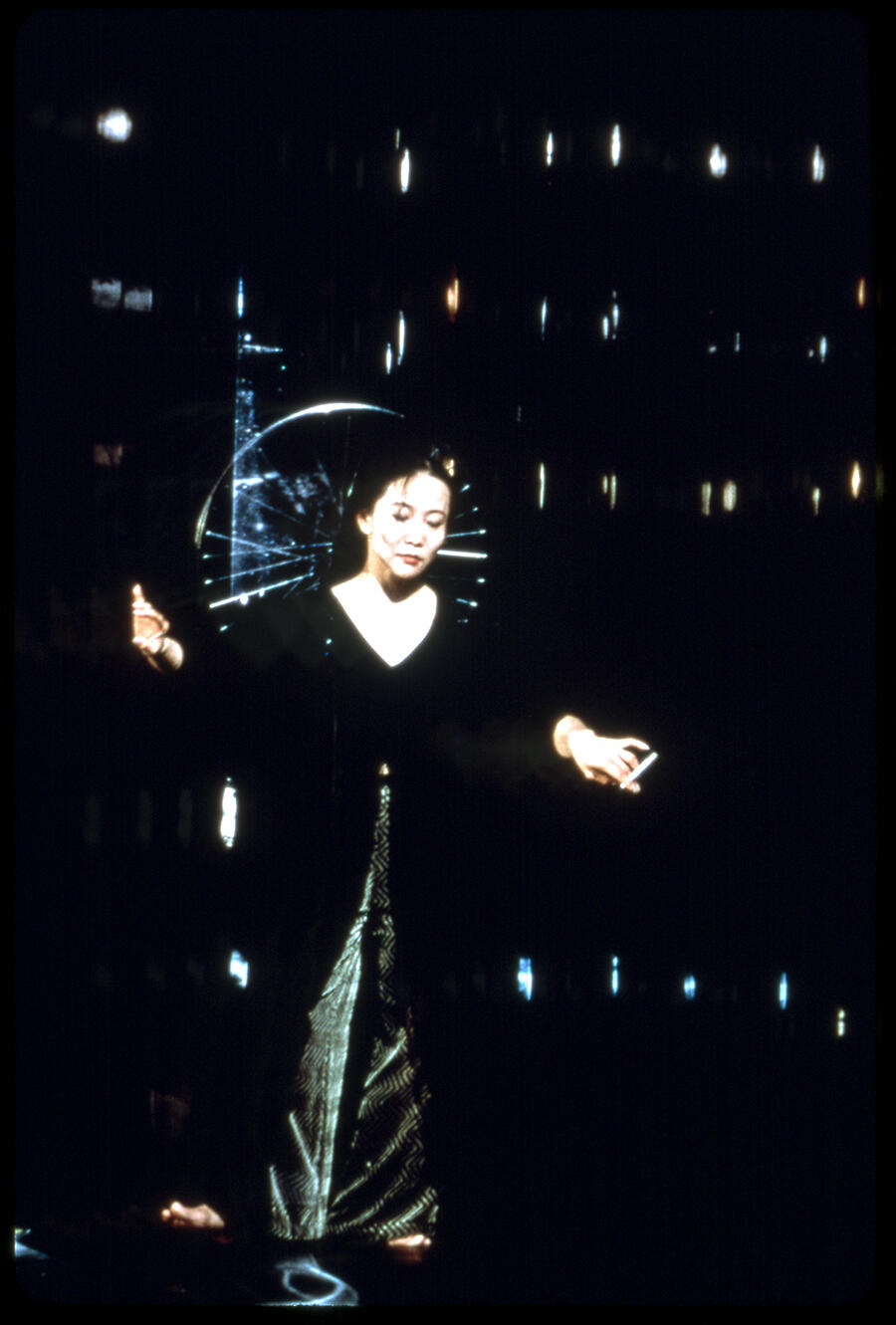
In the 24 years since he closed his company, Lemon’s work – which includes dances, lectures, films, drawings and installations – has dismantled contemporary representations of race and identity. For his 2004 performance Come Home Charley Patton, Lemon danced a version of a ‘buck dance’ – a traditional African American dance associated with minstrelsy and early tap –while being sprayed with a fire hose, the kind used against Civil Rights protestors; he floundered and failed under its pressure. He also documented lynching sites in Mississippi for the work. The shock of violence is transposed in such works to constructive ends; degradation and collapse inspire creative invention.
As with Come Home Charley Patton, Lemon often offers himself up as a target. He instructed his students at Brown University, for instance, to buy his monograph MoMA Modern Dance (2016) in order to destroy it. They tore it up, wrote all over it, burned it and turned it into sculpture. ‘One student made a cake,’ Lemon told me. ‘Like, a literal cake that I ate, with icing and everything. It was remarkable; it looked exactly like a cake. A moist cake. But, when you ate it, it tasted like paper.’
***
For years, Lemon has been obsessed with a photograph of a lynching, taken in the 1920s to be used on postcards. The first in a series of three, the image shows a black man standing naked on a platform, surrounded by a crowd of white people. In the second image of the series, the man can be seen from behind, his back and buttocks gouged by wounds; in the third and final photograph, his body hangs from a tree. During one of our first meetings, Lemon pulled the first image up on his phone and, using two fingers, zoomed in on the man’s face. ‘What I’ve been obsessed with for a number of years is his look.’ The man in the photo stares directly into the camera, his chin lifted, his expression disdainful. ‘He’s implicating the viewer,’ Lemon said. ‘There’s some dignity and some power in that. I’ve just been obsessed with that contradiction. Here’s someone who’s been dehumanized, and yet he’s humanizing the situation.’

Jones told me that Lemon, who he has worked with since 2004, is ‘impish, careless and reckless’ – though he meant it as a compliment, an expression of Lemon’s relentless pursuit of problems that can’t be solved. The lynching photograph is a case in point: how to work with artefacts of such a violent history without exploiting and further denying the agency of its victims? Lemon doesn’t mind being indelicate, for fear he might risk ‘being too careful’. ‘You don’t discover anything,’ he told me. ‘Whereas, if you let yourself mess up and get slapped around, then you have to be accountable to that. There’s knowledge in messing up.’ Despite the political charge of his work, Lemon is sceptical of overtly political readings of art. In 2017, he began an email conversation with Dana Schutz following the protests of her painting Open Casket (2016), depicting 14-year-old lynching victim Emmett Till. ‘The reactions were just a little too easy for me, too facile,’ he said.
When I reconnected with Lemon this year, he hesitated to mention the 1920s lynching photograph. ‘I hit a wall,’ he explained, ‘And I thought: “I can never show this.”’ Okpokwasili had argued that to use the photograph would be akin to ‘killing [the victim] again’, as some had also claimed of Schutz’s depiction of Till. Lemon recorded his conversation with Okpokwasili about the photograph, and the two had planned to read it aloud during their performance with Beasley at the Whitney. On the night of the performance, however, just as they were about to begin the reading, Okpokwasili’s microphone died. ‘I’m not a big believer in ghosts,’ Lemon told me, ‘but certain things are really charged.’
***
Lemon grew up in Minneapolis, the second oldest of six in a family of Jehovah’s Witnesses. He spent his Saturdays with his family, knocking on neighbourhood doors, and every Sunday attended a two-hour church service. At an early age, he began a private rebellion against this strict religious regime, sneaking out to drink and smoke pot, and asking his brother to buy him pints of lime vodka. Stories of the coming Armageddon were a fixture of his childhood: Jehovah’s Witnesses believed that it would occur in 1975, sparing only the faithful. By the time that year finally arrived, Lemon had left the church and remained in Minnesota, while his family had moved to Atlanta. On the foretold day of reckoning, Lemon was in a dance class.
In losing his religion, Lemon was drawn to another kind of reverent community. He moved to New York in 1979 at the invitation of composer and choreographer Meredith Monk, who asked him to join her avant-garde troupe. He immediately fell in with the downtown art scene, watching performances by Pina Bausch, Trisha Brown and Merce Cunningham at venues like the Judson Memorial Church. When Lemon founded his own company in 1985, his early works combined the influence of Cunningham and Brown – the momentum of falling, the attention to the weight of the body – with ecclesiastical elements, like scores of ringing church bells.

By the early 1990s, Lemon felt that he had exhausted the proscenium-stage format, in which dancers seemed to disappear in front of his eyes as they performed. In 1995, after disbanding his company, Lemon began working on a collaboration with six West African dancers and one African American dancer, which became the first of his ‘Geography Trilogy’ (1997–2004), followed by Tree (2000) and Come Home Charley Patton. For much of his company’s ten-year life, Lemon had worked almost exclusively with white dancers; Geography marked the first work in which Lemon approached his own complicated perceptions of his racial identity.
Come Home Charley Patton, the final work in the nine-year trilogy, ended its season at the Brooklyn Academy of Music in 2004. Later that year, Lemon’s partner, dancer Asako Takami, was diagnosed with ovarian cancer. She passed away four years later. Lemon had left one church in favour of another – the theatre – and so he found solace in dancing. His 2010 work How Can You Stay in the House All Day and Not Go Anywhere? began each night with Lemon, seated in a white chair on the stage of the Brooklyn Academy of Music, reciting a lecture with an accompanying film that directly addressed Takami’s passing. Lemon remembered their final kiss: ‘A great passion dissipating, all of our proud sexual surrender now in reverse. She let go and fell asleep again.’ Following his monologue, six dancers performed an improvisation – what Lemon calls a ‘no-dance’ – in which form gave way to disorientating and disordered behaviour. In rehearsals, Lemon asked the dancers to practise stoned and drunk, so they might get closer to the feeling of losing control and falling apart.
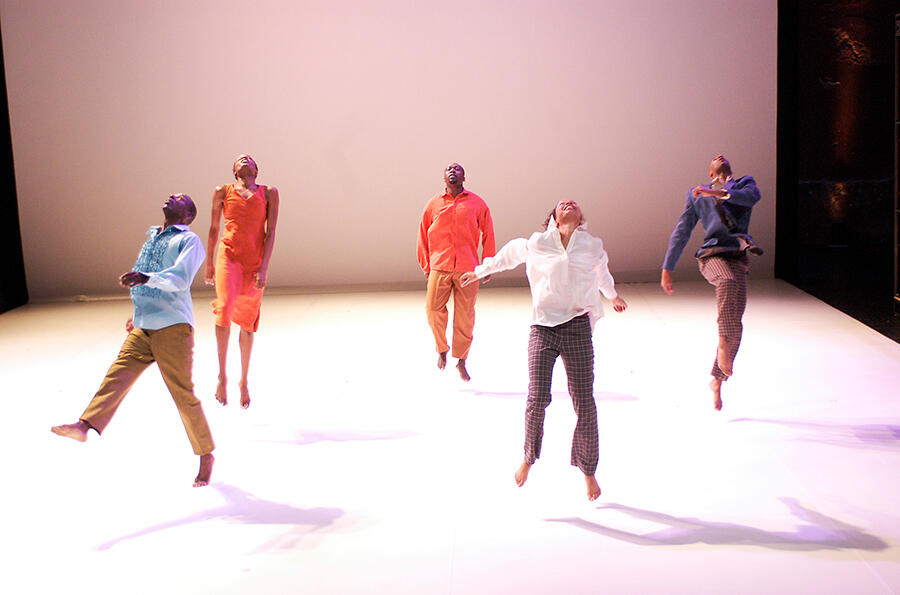
But Lemon, who performs with a studied composure, delegated the most overt mourning in How Can You Stay to Okpokwasili, who wept alone onstage for eight minutes each night. Lemon later admitted to Okpokwasili that he secretly extended the scene’s duration. He also filmed her private off-stage preparations, promising to never present the footage – then later presented the footage to his students without her permission. Okpokwasili was not surprised. ‘Ralph’s a hard person to stay angry with,’ she told me.
Lemon establishes limits with his performers in mutual acknowledgment that they’ll ultimately be breached. ‘It’s not a conscious antagonism,’ said Jones. When Lemon is directing him, Jones will sometimes be crying, sometimes screaming, sometimes talking about Lemon’s deceased partner. ‘Sometimes it can’t be theoretical,’ Jones explained. ‘It needs to be emotional.’ During such highly-charged moments, Lemon will often provoke by saying simply: ‘You still have a minute left.’
***
In April 2017, Lemon’s father died of pneumonia at the age of 91. According to Lemon, his father – who became a Jehovah’s Witness after returning from military service in the Korean War – believed he would return on the day of judgement, so for him and the rest of the family, his death is considered only temporary. Lemon used to call his father once a week, and his father would preach to him, reciting passages from the Bible, warning of the apocalypse. Lemon – playing the quiet, agreeable son – never protested. Considering his father’s death as material for his new project, Lemon acknowledged the impossibility of treating such material ‘appropriately’, and moved ahead anyway.
At Lemon’s East Village apartment – which he first moved into in 1991 and now retains as an artist’s studio – drawings and paintings are stacked in a corner, protected by brown butchers’ paper. A rocking chair sits by the south-facing windows. Bookshelves are ornamented with a collection of Afro-Americana: the smiling blackface figurines are evidence of Lemon’s interest in racial artefacts now considered problematic.

From his rocking chair, Lemon reads me a piece of writing he has been working on for Saturnalia – ‘The Death Text’, he calls it – which combines two conversations: a correspondence between himself and his sister discussing their father’s wellbeing just before his death, and his conversation with Okpokwasili about the photograph of the lynched man. A spectacle of historical violence here intertwines with a death that Lemon witnessed up close – tying the politics of appropriation to an experience of personal loss.
The death of his father brought Lemon grief, but also a disorienting kind of freedom. ‘I kind of liked having someone there keeping me in line,’ he told me. ‘At least the dichotomy. I had someone to rebel against. That intimate rebelling, I think, is beautiful, as opposed to just rebelling at the world.’
Main image: Ralph Lemon, Saturnalia, 2019, as part of ‘Kevin Beasley: A view of a landscape’, 2019, Whitney Museum of American Art, New York. Courtesy: the artist; photograph: © Ian Douglas








